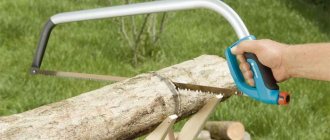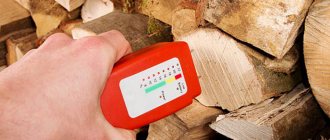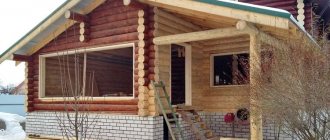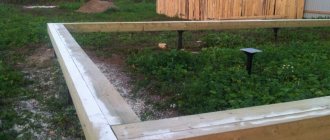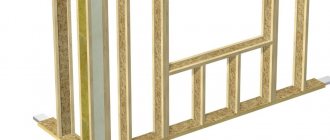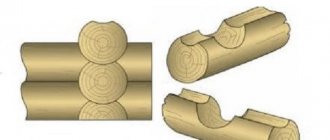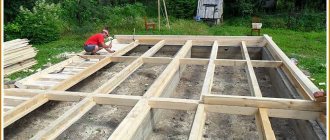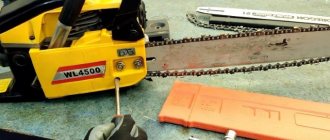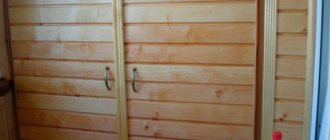Differences in habitat
Trees are entire genera of plants.
The photographs of spruce and pine trees show that they are very different from each other. The appearance of trees depends on the area in which they grow. The European fir tree can be seen in the same place as the pine tree. However, she is more drawn to warmth, so her “place of residence” is located a little to the south. The culture is widespread in Russia, but it is more common in Central Asia and Eastern Europe. Depending on their habitat, different types of spruce are distinguished: Siberian, Oriental, European, Canadian, blue, red, Serbian, Tien Shan, etc.
What is harder, larch or pine?
According to its characteristics, larch
refers to rocks of medium hardness.
It is harder than pine
, but softer than oak.
Interesting materials:
During what period did dinosaurs live? How long does it take to register a car? Which direction is the moon in? Which insurance company is the car insured with? Which equipment contains the most copper? In what range of distances are the giant planets located? In what year did the Americans fly to the moon? In what year was the first bicycle invented? In what year did Holland become the Netherlands? In what year did Atlantis disappear?
How can you distinguish pine from spruce?
Simply put, a Christmas tree is a small spruce. But often a pine tree is also called a Christmas tree - although this definition is incorrect.
And if you are planning to decorate the New Year holidays with such an attribute as a Christmas tree - all 4 trees, including fir and even cedar, are equally good.
At the same time, the difference between pine and spruce species is much more significant than the similarities.
- Pine has more resinous and dense wood than spruce. Its strength properties allow craftsmen to choose pine for finishing. Due to their greater resin content, pine boards and beams are more durable. Thanks to its looser wood, spruce has better heat and sound insulation and reduced weight.
- The smell of pine is much more intense than that of spruce. Pine wood is easier to impregnate with fire-fighting agents than spruce wood.
- In pine trees, unlike spruce trees, the tap root does not die off, giving new lateral shoots at a greater depth. Therefore, you don’t even need to water the pine tree - its roots can easily reach the first aquifer (depth of 3 m). And there will be at least one rainfall during the season. But spruce will be sensitive to drought or waterlogged soil; its lifespan may be reduced several times.
- Pine is preferred for the construction of wooden load-bearing structures and exterior decoration. Its wood texture is darker than that of spruce. Spruce is more suitable for interior work.
- Spruce is less sensitive to mold and mildew than pine.
- Spruce needles are smaller than pine needles.
- The pine tree cannot stand the shadow - it reaches for the light, which is why its branches are raised. This is clearly visible in young pines, which are sold before the New Year holidays. Spruce, on the contrary, needs less direct sunlight and takes root under the crowns of pine trees. Russian species of spruce even take twilight for granted, having gained protection from both the wind and excess light. The lack of direct sunlight is responsible for their accelerated growth not immediately from the emergence of seedlings from the seeds, but only after 15-20 years from the year the seed germinates into a new shoot.
How to distinguish spruce from pine, see below.
https://thedifference.ru/chem-otlichaetsya-elka-ot-eli/
https://stroy-podskazka.ru/el/otlichaetsya-ot-elki/
Terrace board
– This material is relatively new, where does it go?
– It is mainly used near the pool, near the house, on the terrace. Thanks to the longitudinal milling of the board, you won’t slip on it. These boards are made from larch; it is more durable than pine.
The deck board can be used near the pool, near the house or on the terrace. Photo: Alexey Kunilov
What is the difference between cones and seeds?
The shape of spruce and pine cones resembles the crown of these trees - pine cones are rounded at the base and elongated conical for spruce trees. Fruiting differs in timing; spruce trees begin later (20-25 years); pines have 10-15.
These are the reproductive organs of conifers; Both of them have male and female, they begin development in the spring. Female ones are located at the ends of coniferous legs; in spruce they are larger and more noticeable, as they are red. Pollen ripens in male cones, seeds ripen in female cones.
Spruce cones (fertilized) are usually located in the upper part of the tree; in pine they do not have a specific location. Seeds in cones are attached in different ways.
In pine, seed ripening occurs over almost two years, in winter. In its “friend,” they are ready in the current year of pollination.
Both are equipped with wings to reduce the speed of fall. Thus they are carried by the wind over long distances.
Places of growth
The main difference between spruce and pine lies in the places where they grow. Pines prefer to grow in cold and humid climates, so they occupy most of the northern hemisphere. In Russia, pine trees grow mainly in the taiga.
Spruce plantations, in turn, spread throughout Eastern Europe, China and North America. The percentage of spruce forests in Central Asia and Europe is slightly higher than in Russia.
Pine: brief description
Pine is a centuries-old tree, and its age can range from 100 to 600 years. Subspecies of this plant are found as shrubs, trees or dwarf trees. Currently, only a few specimens are known to have survived to the 500-year mark. The height of the pine tree can reach 75 meters, and its base can be 4 meters wide. Preferring a medium-sized tree in wetlands not exceeding 1 meter.
Pine grows in open areas, as it is a light-loving plant. Here the height of the pine tree can reach a maximum of 50-75 meters, and the variety of shapes and sizes of pine cones amazes with their unpredictable curves.
Block house**
– This material imitates the outer part of a log, it looks beautiful, but is it justified to cover the outside of a house with it?
– In the Urals, wood is affordable for many people, thank God. In addition, finishing a house with a block house is comparable in cost to using plastic for this purpose - vinyl siding. And although natural wood looks more impressive, it has its drawbacks: in the open air it will become resinous and begin to deteriorate. It makes sense to use a block house when you need to hide some irregularities. Frame houses covered with a block house look beautiful - they can’t be distinguished from log houses.
What is spruce and what is pine?
Let's try to figure out the difference between a Christmas tree and a pine tree. Norway spruce is one of the largest coniferous trees; it reaches a height of 25–30 m, but there are specimens even higher. The crown has a cone shape. The bark of an adult tree has a smooth gray structure. The coniferous cover is presented in the form of single needles that grow from axillary scales.
Scots pine is classified as a tree characterized by an average growth rate. The height of an adult beauty reaches 25–40 m.
The needles are double and 5–9 mm long. They are located densely in single shoots.
This is interesting: How to cover a roof with iron - we explain in detail
Description of trees
Pine and spruce are similar-looking trees that are “relatives”.
Plants are distinguished by their unpretentiousness to climatic conditions. In addition, these conifers are considered long-lived. On average, trees live about 300 years. Norway spruce is a large tree, reaching a height of 25-30 m. The bark has a smooth structure, and the crown is cone-shaped. The arrangement of branches is whorled. The needles are renewed slowly and gradually; there is no deciduous period.
Pine is a tree, 25-40 m high. The trunk of the plant is straight, but can be bent as a result of pest damage. Young trees have a cone-shaped crown, which over time acquires a rounded shape. Compared to spruce, pine has a different cone structure.
Both plants produce phytoncides and are used as decorative decorations for the New Year holidays.
Spruce: brief description
It is a very beautiful pyramid shaped one. In the first 15 years, spruce is considered a young tree and has a simple tap root structure. Then, in the process of development, it becomes more branched and the main root dies off as unnecessary. On the surface, an identical situation occurs; for a long time, the tree grows exclusively upward, without producing lateral shoots.
The trunk is covered with scaly layers of gray bark. The cut of the spruce is light in color with a slight golden tint, practically does not release resin, the structure is homogeneous. The shape of spruce needles has a cone-shaped structure. Complete renewal of the coniferous crown occurs within 6 years. The places left without thorns are covered with fresh vegetation in the coming year.
By looking at the cones of different coniferous trees, you can understand how spruce differs from pine. Upon closer inspection, one can notice the cylindrical shape and slight pointedness. A special feature of spruce cones is that they hang downwards.
Shelf board
– A shelf is an attribute of any bathhouse; the boards on it should not burn or release resin. What type of wood should I choose for it?
– Wealthy buyers use boards made from African abash wood for these purposes. It has a porous structure, it does not heat up, but it is expensive - 380 rubles per linear meter, a 2.5 meter board will cost almost a thousand rubles. And you need a dozen or more of these. Linden is also suitable for these purposes, and aspen is a budget option.
The most expensive lumber is a board made from African abash wood. Photo: Alexey Kunilov
Similar features
If you try hard, you can find similar characteristics of Scots pine and Norway spruce:
- Both representatives belong to the pine family, coniferous class.
- They have modified leaves in the form of needles.
- The peculiarity of the cones is that they first grow strictly vertically, then hang.
- They belong to the first size trees over 20 m in height.
- They belong to windfall trees.
- They produce bactericidal substances - phytoncides.
- Used for industrial purposes in construction.
- In medicine they are used as medicines in the form of oils, infusions and decoctions.
- Serve as a decorative decoration during the New Year holidays.
Despite some similarities, there are still more differences between them.
How are they similar?
You should not immediately attack those people who are unable to distinguish between these two conifers - even if you identify them automatically, you need to recognize that they have many common characteristics. Experts identify the following common features.
- Kinship. Although only the class of conifers is common to the two trees, and their own genera have already been identified for each, this is still a fairly close relationship, indicating that there are not many differences, and they are not always on the surface.
- Formation of cones. Although they are not exactly the same, the process of their formation is approximately similar. So, at the moment of tying on a branch, they are located vertically, but then under their own weight they lower and acquire a horizontal position.
- Needles instead of leaves. Again, one can argue for a long time about the fact that their needles are different, but still the fact of their presence unites pine and spruce, making them stand out against the background of deciduous trees. The policy of selling not only spruces, but also pine trees before the New Year, further confuses those who are sincerely convinced that only spruce can be a New Year's tree.
- Considerable height. If both trees are left alone and allowed to grow normally, they will surpass most domestic species as adults.
- Phytoncides. Coniferous trees not only smell pleasant, but also have practical properties, including the ability to kill bacteria with the help of secreted phytoncides. In this regard, spruce and pine are approximately equivalent.
- Economic use. Both pine and spruce trees are very useful for human activity, and in different industries. The wood of these species is actively used for industrial and construction needs, and the bark, resin and needles are useful for pharmaceutical and cosmetology enterprises.
Tips for choosing
Buy an artificial Christmas tree/pine tree only in specialized stores, avoid spontaneous markets and fairs. Remember that cheap products often emit toxic substances - formaldehyde and phenol, which cause nausea, dizziness, and headaches. Such fir trees/pine trees are very questionable from a fire safety point of view. A cheap Chinese-made New Year's beauty is not the best option, since there is a high risk of purchasing a low-quality product
Pay attention to domestic or European brands. Before purchasing, make sure that the tree/pine tree is stable and that the needles and branches are securely fastened. To do this, you should run your palm over the soft needles “against the grain”, and tug the hard needles
Bend the “tree” branch slightly. In a quality product, these parts take their original position and do not crumble. The spruce/pine trunk must be smooth. Good spruce/pine is treated with fire-resistant impregnation, which protects against fire if an accidental spark from sparklers or garlands hits it. But paper needles are a fire hazard. An artificial Christmas tree/pine tree should not have a strong chemical smell. To recreate the smell of a living tree, use a fragrance. Don’t forget to ask the seller for a quality certificate certifying that the forest beauty is environmentally friendly and hypoallergenic.
Storage tips
- Fold the spruce/pine so that the branches bend towards the trunk.
- Store the product in a cool place. Under no circumstances should you leave the “tree” near heating appliances or radiators. The same rule is also true when installing a Christmas tree/pine tree.
How to easily distinguish spruce from pine
Spruce and pine trees can be distinguished from each other by comparative characteristics. The difference between spruce and its closest “sister” is presented in the table.
| Characteristic | Spruce | Pine |
| Branches | Omitted, forming the shape of a pyramid or cylinder. They start almost from the ground, completely covering the trunk. | Directed upward, starting from the middle of the trunk. Allows most of the sunlight to pass through. |
| Needles | Small and thin, densely located. Painted in bright green (variations are possible, depending on the type). The needles are attached to the branches one at a time and are replaced every 7-12 years. The length varies from 2 to 3 cm. | The length of the needles is 4-6 cm. The needles are larger and smoother, tapering towards the end. The needles grow in pairs and fall off in the same way. With the onset of cold weather, their color changes from light green to yellowish with a hint of copper. Most of the needles fall off in the fall. A complete change of cover occurs within 1-3 years. |
| Aroma | Weak, barely perceptible. | Expressed. |
| Height | Trees reach 50 m (there are exceptions, depending on the species). | Most trees grow up to 75 m. |
| Cones | “Male” - medium size, faded. “Female” - large, bright, located at the tips of branches (in the upper part of the tree). | “Male” ones are yellowish, no larger than a cherry pit. “Female” - very small, inconspicuous, located at the ends of the whorls. |
| Trunk | Knotty, less resinous. | Smooth, straight, with a lot of resin. There are no knots or defects. |
Spruce
Spruce belongs to the Pine family, Coniferous class. This is an evergreen tall tree with a fluffy pyramidal crown. Spruce trees are widespread in Eastern Europe, Central and Northeast Asia, North America and China. In addition, spruce is one of the forest-forming species. Spruce lives on average 300 years and grows up to 50 meters.
The arrangement of spruce branches is whorled. Every year another whorl appears. Needle-shaped, tetrahedral dark green needles are attached to the skeletal branches. The length of one needle does not exceed 3 cm. It can be attached to a branch for up to 12 years. Spruce needles fall off and are replaced gradually. The tree does not have a pronounced deciduous period.
Spruce
Spruce is shade-tolerant, so it can grow in a mixed forest, in the shade of other trees. The tree can live on nutrient-poor stony, calcareous and podzolic soils. This tree does not tolerate extremes in soil moisture requirements. Neither excessively moist soil nor dry soil is suitable for it.
The spruce root system is of the taproot type. But the main root of the tree is poorly developed, and after ten years it begins to die. Therefore, the main impact on keeping the plant in the soil and extracting water and mineral compounds from it falls on the lateral roots. The roots do not always cope with the first task, so cases where a spruce is uprooted by a strong wind are not alone.
Spruce cones come in two types: female and male. Female spruce cones immediately catch the eye with their bright red color and the size of a hazelnut. They are located in the upper part of the crown at the very tips of the branches. Male cones are smaller, their color is not so bright, and yellow pollen ripens in them.
Types of Norway spruce
In addition to the wild form, Norway spruce has a lot of garden subspecies, including columnar, weeping, and elfin.
There are variations with different colors - from dark green to yellowish and bluish.
Norway spruce species differ quite greatly from each other, primarily in size, shape, color of needles, as well as requirements for soil, temperature and lighting.
READ Linden tree: description of the trunk, crown, fruits, flowers
According to types of branching, spruce is divided into:
- comb - horizontal or hanging branches;
- irregularly combed;
- compact - common spruce, the branches of which grow in a horizontal direction, quite dense;
- flat – wide, not very dense branches grow in a horizontal plane;
- brush-like - thick, rather short branches with small hanging branch branches.
The most popular garden varieties: Spiny, Echiniformis, Acrocona, Magnifica, Berry.
Echiniformis
There are also many different dwarf forms (no higher than 1.5 m) with a compact, dense hemispherical or spherical crown.
Little Norway Spruce is essentially a miniature, dwarf form of the Norway spruce.
The smallest varieties have a height of only 40-50 cm.
Dwarf forms are unpretentious to the soil, climate and environment. They grow well in moderately moist soils and love well-lit areas.
For your information. The only exceptions are some varieties of blue spruce, which love shade and need shelter from frost (only young trees).
Use of spruce by humans
Man tries to use the environment as beneficially as possible. And the spruce tree is no exception. Not only strong wood is obtained from it, but also effective medicines.
Spruce is used in medicine in the most active way. Immature tree cones, young needles and tops of branches are often used for bronchial asthma, diseases of the upper respiratory tract, diseases of the bladder and kidneys. For joint pain, it is recommended to take baths. Baths also help with skin disorders and nervous diseases. To do this, you need to chop the pine needles, boil it for 10 minutes and let it brew for 12 hours. After this, the decoction is ready for use.
The oil of this tree is added to inhalations to treat coughs, it facilitates the separation of sputum, treats sore throat and purulent bronchitis. Decoctions from young pine needles have bactericidal properties and are a storehouse of vitamins.
In pharmaceuticals, synthetic camphor is made from spruce, which is part of balms that are used to rub joints for arthritis and rheumatism. Camphor is also part of the drugs used to treat heart diseases. Also in medicine, purified turpentine is used to make irritating ointments and balms (turpentine ointment, “Tiger Balm”). Coniferous extracts with a relaxing effect are also on sale.
Wood is used in various industries. Spruce wood is characterized by high resonant characteristics. Musical instruments are made from it It is also quite soft, so it is suitable for creating cardboard, high-quality paper, cellophane and film. Spruce resin and wax are used in the leather industry. The use of spruce wood in construction is complicated by the fact that it is not strong enough and warps during drying. Therefore, building materials are made from it. It is an indispensable material for the furniture industry. Finishing materials are created from spruce wood. It is often combined with other breeds. Spruce wood is also used in shipbuilding to build the internal frame of a ship.
Use of spruce on the farm - it supplies tannins, which are necessary for tanning leather and similar products. These substances are obtained from tree bark.
Categorical opposites
From a botanical point of view, these species are completely different in appearance and growth characteristics:
- Their crown shape is similar only at a young age. And if spruce preserves it throughout its life, then pine changes shape beyond recognition with age. A spreading, disorderly canopy is formed from a regular geometric cone.
- The growth rate of pine is higher than that of spruce. The first one gives growth at a young age, on average 50 cm. Spruce grows extremely slowly up to 10 years.
- The structure and color of the bark differs radically. Spruce's is thin, smooth, gray. The pine “cover” differs in thickness, layering, and color. The coloring in the lower part of the trunk is grayish-brown and much darker than on the upper branches. Pine bark is one of the most popular decorative materials in landscape design for figured paving.
- Spruce needles fill the shoots with single “needles,” while double needles are formed on pine. Their length is twice that of spruce trees.
- Pine seeds begin to appear in the ninth year. Reproductive capacity of Spruce occurs at the age of 20 years.
- Fir cones, 10–15 cm in size, ripen throughout the current year. Pine fruits ripen 18 months after pollination.
- Both types require high soil aeration and do not tolerate compaction and trampling.
- They have high frost resistance.
From the point of view of environmental conditions, the choice of growing location is radically different:
- Pine is a typically light-loving plant, which feels better the more sun it has. Spruce, on the contrary, prefers partial shade and suffers in scorching heat.
- Both crops are moisture-loving, but unlike pine, spruce does not tolerate drought at all.
- And those other windfall trees, but with strong gusts on the Pine, the crown and upper part of the trunk are the first to break. The spruce is immediately uprooted.
- For full growth, Spruce requires rich, fertile, loose soil. Pine makes do with relatively poor sandy soil. Although, both species intensively acidify the soil around them with the products of their vital activity.
- The winter hardiness of Spruce is much less than that of Pine. For the first, changes in night and day temperatures at the end of winter and beginning of spring are especially dangerous, then spruce trees need to be protected with a light covering, for example, agrofibre.
- Spruce is more resistant to urban gas pollution than pine.
- Pine, unlike Spruce, is planted in windproof plantings due to its rapid growth.
Basic characteristics of spruce and pine in comparison
Color
Spruce has a lighter and more delicate tone. The shade stability is high, the breed is not prone to blue discoloration. Pine comes in a wide range of shades, from yellow to brick. Over time, pine wood tends to darken. The richness of its shades is valued in construction.
The presence of blue stains in pine lumber is not evidence of rotting processes. This only indicates the freshness of the cut. Over time, the blue of the pine disappears.
Fiber structure
Spruce has a uniform and not too intensely expressed fiber structure. Pine, on the other hand, has a more characteristic and recognizable texture, with clearly visible annual rings.
Resin content
Spruce has lower resin content than pine. This determines a number of features in the processing and use of materials. It is recommended to use spruce for the construction of baths due to its minimal resin content. When heated, the resin does not release as actively as is the case with pine.
Machinability
Spruce is distinguished by an abundance of small knots, which makes it difficult to process. In this regard, pine is more pliable and has minimal presence of large knots. Pine tolerates sawing and cutting well, while spruce tolerates sanding and chipping. Manual cutting is equally successful when working with both types of materials.
Rot protection
Spruce has moderate natural protection against rotting. To preserve the material, it requires additional impregnation against fungi. In most cases, pine does not require such treatment, as it has high natural protection against rotting.
Board manufacturing technology
The methodology for producing lumber from softwood is constantly being improved, but the general algorithm of actions remains unchanged.
The instructions for the manufacture of boards, bars and beams assume the following sequence of operations:
- At the first stage, the selection of raw materials is carried out - logs obtained from logging. For work, workpieces are selected that are suitable in size, humidity and quality (i.e., without serious external defects).
Primary processing of workpieces on a band sawmill
- Next, the log is sawed. In this case, the part is either dissolved into unedged boards, or several slabs are removed from it to obtain timber.
- The timber intended for the production of edged sawn boards is fed to the sawmill, where it is sawed.
- The workpieces obtained after sawing can also be sold in a state of natural humidity. However, such material is of lower quality, therefore, before sale, the raw materials are usually dried either in a warehouse or in a special chamber.
Manual sawing of pine beams
Note! When kiln drying, simultaneous loading of lumber of different thicknesses is not allowed, as this can lead to deformation of the wooden blanks due to uneven heating.
- After drying, the edged board is either sent to a warehouse for further sale, or transferred for further processing - planing, profiling, cutting to size, etc.
The difference between spruce and pine
Christmas tree and spruce - People use these terms to refer to any trees decorated for the holidays. Sometimes pine is also called this, although the scientific approach does not approve of this.
In botany, this type of tree stands apart, because has its own characteristics. To verify this, just study her photograph.
The main differences between Christmas trees and pines are as follows:
- Wood. Pine is dense, with a lot of resin. Due to its strength and durability, it is more often used as a building material. As for spruce, it has its advantages. These include low weight, good noise and heat insulation properties. Interior decoration with spruce wood ensures silence, protects from cold and winds, and reduces utility costs (heating, electricity).
- Aroma. Another difference is the intensity of the smell. Spruce has a less pronounced aroma (many people notice that the smell in a pine forest is stronger than in a spruce forest). Its wood is more difficult to impregnate with fire-fighting substances.
- Needles. If you look at what a spruce tree looks like in the photo, you can see small thin needles. Pine trees have longer and larger needles.
- Whimsicality. The tap root of the spruce dies over time, which makes it unable to reach the first aquifer located at a depth of 3 m. Therefore, the tree is sensitive to the lack of rain and waterlogged soil (growing in such conditions greatly reduces its lifespan). The pine tree retains its taproot, so it can easily withstand long periods of drought. If a tree grows on a personal plot, it does not need to be watered (or it should be done rarely).
- Need for sunlight. Spruce trees easily tolerate the lack of sunlight and feel good in the shade under the crowns of other trees (this is especially true for varieties growing in Russia). The lack of ultraviolet radiation leads to the fact that during the first 15-20 years they grow slowly, and then develop at a rapid pace. Pines are light-loving trees that need the sun and are constantly drawn to it. Because of this, the branches rise slightly upward (especially in young specimens that are sold before the Christmas holidays).
- Properties of wood. If we talk about the difference between trees, it must be said that spruce is less often affected by harmful microorganisms. This allows it to be used for finishing damp rooms prone to the formation of fungus and mold.
- Scope of application. Pine trees have darker wood and are used for exterior work and for the production of load-bearing structures. As for spruce, it is more often used for interior decoration.
Features of caring for spruce and pine
Since these conifers are quite different, it is reasonable to assume that their care requirements will also differ. This mainly manifests itself in the watering regime and the choice of location for planting trees.
As mentioned above, pine is unpretentious to soils and easily adapts to life in rocky or wetlands and other places that are not rich in fertile soils. It tolerates dry conditions well, is frost-resistant, and is not afraid of wind and heavy rainfall. However, for all its durability and vitality, the tree has difficulty growing in areas where there is a lack of sunlight. Therefore, when choosing a planting location for a plant, preference should be given to well-lit areas where there is no shadow at all.
Spruce is no less hardy and also undemanding in terms of soil quality. It has enviable frost resistance, and, unlike pine, it feels good even in places with extensive shade. A key condition for the well-being of this breed is proper watering. When growing spruce on your site, it is extremely important to ensure that the soil underneath is not too wet or too dry. Otherwise, it will begin to rapidly wither, and its root system will become vulnerable to diseases and pests.
If the basic conditions are met, then both representatives of the conifers will not be subject to infection and will serve as decorative decorations of the landscape for many years.
Spruce varieties
Norway spruce is the most popular variety and is most often seen in photographs. It is an evergreen coniferous tree with a cone-shaped crown and dark gray bark. Representatives of the species grow up to 30 m (some specimens reach 50 m). They are found in Russia, North America, the Balkan Peninsula, northeastern Europe, as well as in the Pyrenees, Alps and Carpathians.
There are other varieties of spruce:
- Siberian. Many people are interested in what Siberian spruce looks like and how it differs from other species. "Siberian" has a pyramid-shaped crown, shorter and prickly needles. The average height is 30 m, and the diameter is 70-80 cm. The spruce habitat is Kazakhstan, the Urals, northern Europe, China, the Magadan region, the Scandinavian Peninsula.
- Eastern. Grows in the Caucasus and northern Asia. It has a conical shape, gray-brown bark with a small amount of resin and branches located close to each other. Mature spruce trees reach a height of 30-55 m. They look especially impressive in clean areas where no other trees grow.
- Ayanskaya. The difference between common spruce and Ayan spruce is minimal, so only a professional can distinguish them from each other. This species can be found in the Far East, Sakhalin, Kamchatka, the Kuril Islands, the coast of the Sea of Okhotsk, China, Korea and Japan.
- Canadian. A slender, low tree that grows up to 15-20 m. The trunk diameter does not exceed 1 m, so you can easily grab it with your hands. Canadian spruce has thin, scaly bark and long blue-green needles. The shape of the crown changes throughout life: at first it looks like a narrow cone, then - a cylinder. The homeland of spruce is North America.
- Korean. Grows in the Far East. It has a pyramidal crown, gray-brown bark, and bluish-colored needles. The trunk diameter can reach 80 cm.
- Red. Its height varies from 20 to 40 m, but only if it grows in favorable conditions. The average trunk diameter is 50-60 cm. A distinctive feature of this species is its long needles, which are almost unprickly due to their rounded ends. Most of these trees are found in Canada and England.
- Blue. A popular variety that can grow up to 46 m. It is often planted in garden plots and serves as a decorative element. It has beautiful gray-green or bright blue needles, red or purple cones. The crown of young and mature trees has a different shape: at first it looks like a narrow cone, then like a cylinder. Spruce prefers moist soil, so in nature it grows on the banks of streams and mountain rivers.
- Tien Shan. One of the tallest varieties of spruce, reaching 60 m and having a wide trunk (from 1.7 to 2 m in diameter). It has diamond-shaped needles, a crown in the form of a cylinder or a pyramid. If necessary, the roots bend in different directions and cling to stones and rocks, which allows the tree to grow even in less than favorable conditions. Growing areas: Kyrgyzstan, Kazakhstan, mountainous regions of the Tien Shan, Central Asia.
- Serbian. Most representatives of this species have a height of 20-35 m (rare specimens grow up to 40 m). The tree has a narrow pyramidal crown, short and sparse branches, and green shiny needles (if you look closely, you can see a bluish tint). It is rare to see Serbian spruce in nature. Its habitat is Eastern Bosnia and Western Siberia.
- Spruce Glen. How it differs from common spruce is the presence of the densest crown. The bark has chocolate-colored scales. Dark green needles have a bluish tint and a pronounced aroma. Spruce is found in Japan, the Kuril Islands and Sakhalin.
How to distinguish them?
In fact, if you look closely, there are many differences between spruce and pine, and any person who once remembers what distinguishes two trees from each other will be able to always accurately determine the type of plant, and if necessary, also impress others with his erudition. So that your confidence is supported by logic and knowledge, let's look at how the two trees differ.
First, let's talk about size. We mentioned above that the maximum height of a pine tree is approximately one and a half times greater than that of its relative, but let’s be objective: neither the first usually grows to the declared 75 meters, nor the second to 50. For pine, the average norm is considered to be 25-40 meters, and for spruce - an average of 30 meters (this tree has a much wider range of average height - from 15 to 50 meters for an adult specimen). Roughly speaking, these indicators can be called the same, but there is one inevitable difference - the shape of the crown. The needles of a pine tree start very high - about halfway up the tree's height, and below that, a bare trunk stretches for many meters. The Christmas tree has a more luxuriant crown, and branching begins almost at ground level.
It is very easy to distinguish one from the other by the cones. Pine has a problem with this, so to speak: the male cone is extremely modest in size, it is often compared to a cherry pit, and its color is approximately similar - yellowish. In general, few people notice female cones, because they are even smaller and almost invisible - they grow at the end of the branches. But in spruce, female cones are clearly visible - they are not only much larger than male cones (and spruce cones are, in principle, much larger), but also have a distinctive bright red color. Male fir cones are much smaller, and their shade is not as bright, but they are the ones in the broad public understanding that are associated with the cone as such.
In winter, the difference between the two trees is also clearly visible in the needles. The fact is that of these two, only spruce can be fully considered evergreen, but it, of course, cannot be counted among those trees whose coniferous cover never changes. The Christmas tree periodically sheds old needles, and this happens approximately once every 7-12 years, but this can only be noticed by the characteristic coniferous cover near the trunk. This species does not have any pronounced deciduous period; everything happens gradually, and the process can be called almost constant and continuous.
A pine tree that lives in very harsh winter conditions cannot afford such luxury, and although it never remains completely bare, in the cold weather it still becomes much less green.
To understand the scale of needle shedding, it is enough to know that a tree can completely “change clothes” in just 1-2 years.
Spruce needles look tetrahedral in cross-section, their length usually does not exceed 2-3 centimeters, and each plate is attached to the branch independently of all the others. Pine needles are different - its cross-section is smoother and does not have pronounced angles, but the length is twice as long as that of its competitor - at the level of 5-6 centimeters. Moreover, pine blades grow in pairs.
A trained eye can easily distinguish a pine from a spruce from afar, and by the same needles. A characteristic feature is the color inherent in the plates, which in winter allows you to see the difference from almost a kilometer away. Spruce was chosen as the main New Year and Christmas tree because its coniferous blades have a bright green color, and this characteristic is not affected by the time of year, the age of the tree, or any other factors. Whether it's pine - as we have already said, the harsh conditions of its habitats lead to the fact that it has a certain similarity with deciduous trees. Firstly, its needles even in summer have lighter shades of green, and secondly, in autumn and winter they often completely wither, turning into a yellow palette of shades.
Life expectancy is also different, although this criterion is unlikely to help you understand what is in front of you - pine or spruce. Moreover, if the average life expectancy is in favor of pine, then the spruce record holder for the antiquity of the root system is almost twice as long as its pine opponent - 9.5 thousand years versus 5 thousand.
Since we are talking about the peculiarities of the root system, let us note one more sign, which is also not striking from the outside. The pine tree has a clearly visible main core, from which multiple additional roots branch. It is thanks to such a powerful underground component that pine does not “get lost” in any situation and can grow almost anywhere. In spruce, the main rod also stands out, but, interestingly, after reaching the age of ten it atrophies, and from then on the entire load is placed on the lateral rhizomes. They are not located too deep in the ground, which has two negative consequences: firstly, the spruce turns out to be more demanding in terms of growing conditions, and secondly, a strong wind can tear out such a tree and overturn it.
It is also worth clarifying the features of wood as a material for construction. In this sense, pine is much preferable, since its trunk is straight, and knots and other defects are extremely rare in the thickness of the solid wood. In addition, such wood is quite soft and easy to process, and it is very easy to impregnate it with protective compounds. It’s a matter of spruce: knots are not uncommon in its massif, and it doesn’t absorb antiseptics very well. Another radical disadvantage is the ability of spruce to absorb water and swell.
For this reason, pine is used for any needs, but spruce is suitable only for interior work, and even then not everywhere.
What is the difference between pine and spruce
The differences between these two breeds can be described in several categories:
- size and height;
- size of cones;
- shape and type of needles;
- life expectancy;
- type of root system;
- color;
- application in industry.
Tree size and height
Spruce grows only up to 50 m. Pines grow up to 75 m, and some even higher and more. The pine trunk is much thicker and stronger.
Did you know? In Sweden, spruce grows, which is more than 9 thousand years old, it is considered the oldest plant in the world at the moment.
Cone size
The cones of the Christmas tree are loose and long. The scales are oval. Size up to 15 cm. The second tree has cone-shaped cones, the size of which reaches 6 cm. The scales are triangular and dense.
Needle shape
Spruce needles are sharp, thick, very small, only up to 2 cm. This tree consists of single needles, seeds and branches. Pine has long sparse needles, up to 4 cm, two needles in a bunch.
Lifespan
The Christmas tree lives up to 400 years. Not counting certain species that have a shorter duration. The life of the second conifer lasts up to 300 years, excluding some species, whose duration is longer due to the characteristics of the territory and soil.
Lifespan
Another important difference between spruce and pine is life expectancy. Pine lives on average about 300-350 years
Most trees of this age grow in the Russian taiga, Europe and the Balkans. However, there are exceptions to the rules in the world. For example, the maximum lifespan of an ordinary species was 1000 years. Pine trees grow in places inaccessible to people, the age of which has already exceeded 5000 years.
As for spruce, it lives a little less than pine - 200-300 years. Black spruce trees native to America can live up to 350 years. Each type of tree has its own long-livers. For example, in the USA, in a district in eastern California, there is a specimen over 5,000 years old. Another long-liver is a tree that has been growing in Sweden for more than 9,500 years.
Natural disasters, the harmful influence of people, drought or fires - all these conditions negatively affect the life expectancy of trees.
What types of pine trees are there?
This family includes several different species. As an example, we should consider the main places where the tree has taken root well are European and Asian territories. The length of the needles can reach 10-15 cm. Centuries-old trees are distinguished by spreading branches, high strength and resin. The tree trunk is straight, covered with a thick protective layer of gray-brown bark. The top of the pine tree is characterized by orange-red bark, which quickly and easily hardens. The main growth of a tree occurs in the first century of its life.
Dwarf pine is used to decorate personal plots. It takes root well in a small area, is easy to process and does not leave debris. In addition, due to its small size, it can be placed in a small area. These trees blend perfectly with the flora of any landscape design thanks to all sorts of colors. Dwarf pine is an unpretentious plant, but for planting it is necessary to use seedlings aged from 3 to 7 years. Additional watering can be eliminated, since trees are able to obtain all the necessary moisture independently from the environment. An exception may be the driest regions.
Types of fir trees
For a more detailed look at the characteristics of these trees, it is worth mentioning the blue spruce. This beautiful plant is used for decorative planting. The height of an adult tree can reach 50 meters. True, specimens are often found no higher than 25-30 meters with a trunk diameter of 1.5 meters. Spruce needles initially take a conical shape, then, growing, become cylindrical. The length of the needles does not exceed 3 cm, and the cones of blue spruce can grow up to 11 cm in length, taking on shades from reddish to purple.
Glen's spruce is an original tree with an unsightly crown. It reaches a height of about 30 m, while the diameter of the trunk varies from 60-80 cm. The Japanese and Kuril Islands, as well as some regions of Sakhalin, are the main habitat of this interesting species. Looking at this tree, you can understand exactly how spruce differs from pine. This is mainly the shape of the needles and the length of the needles, not exceeding 3 cm. To this you can add the structure of the bark and wood.
The magical properties of spruce
Popular beliefs endow spruce with strong mystical properties. The tree is used in cleansing rites and rituals to protect against otherworldly forces, and is used in meditations aimed at streamlining thoughts and feelings. The plant helps restore mental balance in case of excessive temper, helps to control oneself and look at things soberly.
At the same time, it is not recommended to stay in contact with spruce for a long time if you are prone to melancholy; the tree can aggravate the condition. It is also believed that in the summer months the plant can draw strength from a person, while in winter it releases accumulated energy.
Living conditions
Scots and Siberian pine, Norway spruce are the most common species found in Russian lands. Both species grow everywhere, adapting to environmental conditions.
The main difference is in relation to the illumination of the growing area. Pine is very photophilous, it is so drawn to the light that it is able to live at high altitudes above sea level, where there are no competitors, on soil poor in useful compounds. If the branches are in the dark, they gradually die, and the trunk in this place is covered with bark. Spruce tolerates large shades, so its branches are located even near the ground, in the shady area. Spruce forests love soils rich in nutrition and moisture.
Pine trees reach for the light.
Due to the different relationship to sunlight, the vegetation under the canopy of a spruce forest differs from that of a pine forest. This also applies to mushrooms and berries, mosses and lichens.
Floor board
– Why do tongue and groove floor boards come in different thicknesses and widths? How to choose them correctly?
– If the subfloor is already laid from edged boards, then you can put the thinnest tongue-and-groove floor board with a thickness of 27 millimeters on top, because in this case there is no point in buying a thicker one. The most popular flooring board, due to its versatility, is 35 millimeters thick. The width of the floor boards is also different, some are wide - 135 millimeters, some are narrower. Often they take a wide board, although a narrow one is best for the floor. I’ll tell you a secret: a narrow board shrinks less, which is why professionals choose it.
Nikolay Chernyshev has been selling lumber for many years. Photo: Alexey Kunilov
